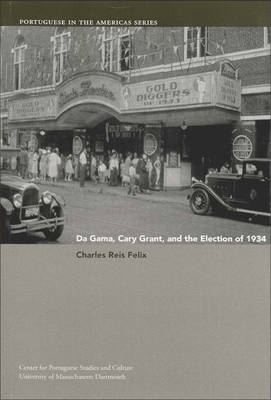
- Afhalen na 1 uur in een winkel met voorraad
- Gratis thuislevering in België vanaf € 30
- Ruim aanbod met 7 miljoen producten
- Afhalen na 1 uur in een winkel met voorraad
- Gratis thuislevering in België vanaf € 30
- Ruim aanbod met 7 miljoen producten
Zoeken
Omschrijving
Da Gama, Cary Grant, and the Election of 1934 is the story of an election for mayor in a Massachusetts mill town in 1934 as seen through the eyes of a ten-year-old Portuguese boy, Seraphin. The incumbent, a Yankee, is challenged by candidates from five different ethnic groups-Irish, French Canadian, Polish, Portuguese, and Jewish. A portrait of each candidate is subtly drawn and we meet campaign workers like Teddy, who has enlisted to help secure a teaching position for his daughter, and Jimmy, a numbers runner who proudly passes out cards announcing his appointment as Assistant Campaign Manager, North End. But the novel is more than just the story of an election. The specter of the Depression hovers over every scene. Laura, Seraphin's big sister, describes her job as a fruit-store clerk in every excruciatingly painful detail. And the allure of America is always present for Seraphin in his desire and longing to lead an American life. America also affects the remarkable Secundo B. Alves, the Portuguese candidate. Secundo's memories of the Azores are honest, authentic, and touching. But when he is defeated in the primary, he quickly bounces back as a supporter of the Frenchman's candidacy and rewrites his Vasco da Gama imagery. Secundo is showing the adaptability it takes to succeed in America. Da Gama, Cary Grant, and the Election of 1934 is a valuable historical document and an artistic triumph.
Specificaties
Betrokkenen
- Auteur(s):
- Uitgeverij:
Inhoud
- Aantal bladzijden:
- 160
- Taal:
- Engels
- Reeks:
Eigenschappen
- Productcode (EAN):
- 9780972256186
- Verschijningsdatum:
- 31/10/2005
- Uitvoering:
- Paperback
- Formaat:
- Trade paperback (VS)
- Afmetingen:
- 152 mm x 216 mm
- Gewicht:
- 272 g

Alleen bij Standaard Boekhandel
+ 52 punten op je klantenkaart van Standaard Boekhandel
Beoordelingen
We publiceren alleen reviews die voldoen aan de voorwaarden voor reviews. Bekijk onze voorwaarden voor reviews.











